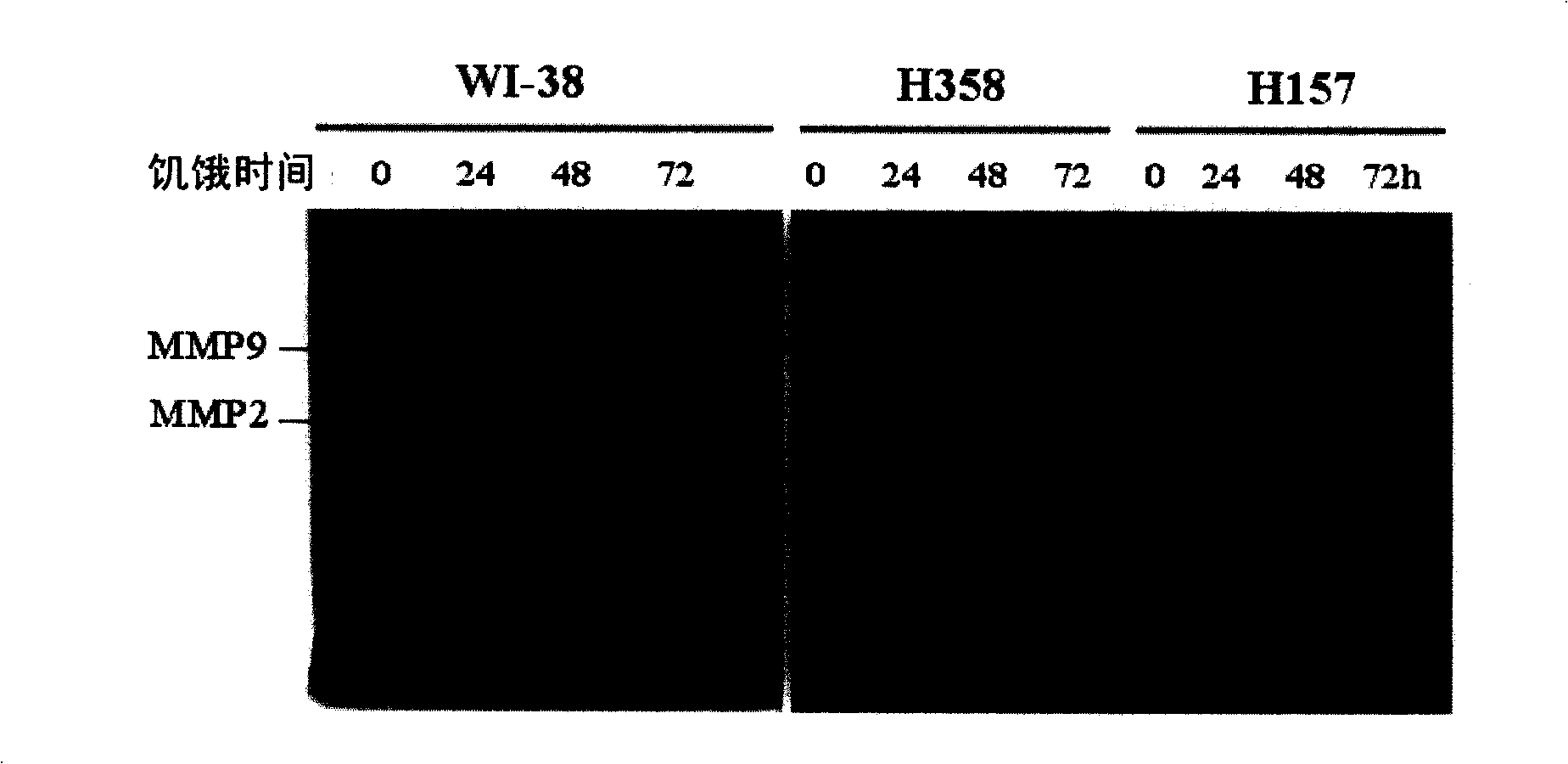Novel use of ubiquitin c-terminal hydrolase-l1
A technology of UCH-L1 and its use, which is applied in the field of compositions for diagnosing cancer metastasis, and can solve problems such as poor understanding of specific characteristics
- Summary
- Abstract
- Description
- Claims
- Application Information
AI Technical Summary
Problems solved by technology
Method used
Image
Examples
Embodiment I
[0103] Embodiment 1 utilizes UCH-L1 to diagnose cancer transfer, suppress cancer transfer and screen the inhibitor of cancer transfer
[0104] I-1. Screening of proteins associated with cancer metastasis to identify target molecules
[0105] In order to identify proteins associated with cancer metastasis, the inventors of the present application analyzed the H157 (squamous cell carcinoma) with invasive ability, the H358 (bronchoalveolar carcinoma) cancer cell line without invasive ability, and the normal lung cell line WI38 ( Differentially expressed proteins in intracellular or extracellular fractions of VA-13 subclone 2RA (fibroblasts).
[0106] H157, H358 and WI38 cells were maintained in RPMI-1640 supplemented with 10% (v / v) fetal bovine serum (FBS), 100 units / mL penicillin, 100 μg / mL streptomycin, 3.75 μg / mL sodium bicarbonate and 10 mM HEPES (pH 7.3, containing 2mM L-glutamine).
[0107] I-1-1) Using Matrigel TM Coated transwell for invasion detection
[0108...
Embodiment II
[0156] B16F10 mouse melanoma stable cells expressing UCH-L1-specific RNAi in Example II decrease in cell migration
[0157] Through the metastasis experiments using animal models, the inventors of the present application tried to clarify whether UCH-L1 is a key target molecule related to cancer metastasis. Normal B16F10 mouse melanoma cells are highly invasive, and their first target organ during metastasis is the lung. Using a lentivirus-based system, the inventors of the present application generated B16F10 stable cells in which UCH-L1 was knocked out.
[0158] After the B16F10 stable cells were prepared, the B16F10 stable cells were injected intravenously into the tail vein to check whether the lung metastases were reduced.
[0159] Figure 11 is a schematic diagram showing a metastasis experiment using an animal model.
[0160] II-1. Preparation of B16F10 mouse melanoma stable cells expressing UCH-L1-specific RNAi
[0161] The expression level of UCH-L1 in the B16F...
Embodiment III
[0174] Embodiment III utilizes UCH-L1 to screen the inhibitor of tumor metastasis
[0175] To screen for chemical agents that inhibit the expression or hydrolase activity of UCH-L1 (inhibitors for cancer metastasis), High Performance Screening (HTS) can be used ( FIGS. 18 and 19 ).
[0176] As shown in Figure 18, ubiquitin-AMC (Ub-AMC, a C-terminal 7-amino-4-methylcoumarin derivative of ubiquitin) can be used as an artificial fluorescent substrate for UCH-L1. The "hit ratio" of UCH-L1 inhibitors can be detected by monitoring the ratio of UCH-L1 released from Ub-AMC to free AMC (relative fluorescence intensity).
[0177] In detail, when the mixture of UCH-L1 (5 ~ 10nM) and Ub-AMC (0 ~ 1000nM) was mixed with different candidate chemical preparations (different concentrations) as inhibitors in UCH assay buffer (50mM Tris-HCl [pH 7.6] , 0.5MmEDTA, 0.1mg / mL albumin, with or without 5mM dithiothreitol), the relative fluorescence intensity can be monitored by HTS to verify the hydro...
PUM
 Login to View More
Login to View More Abstract
Description
Claims
Application Information
 Login to View More
Login to View More - R&D
- Intellectual Property
- Life Sciences
- Materials
- Tech Scout
- Unparalleled Data Quality
- Higher Quality Content
- 60% Fewer Hallucinations
Browse by: Latest US Patents, China's latest patents, Technical Efficacy Thesaurus, Application Domain, Technology Topic, Popular Technical Reports.
© 2025 PatSnap. All rights reserved.Legal|Privacy policy|Modern Slavery Act Transparency Statement|Sitemap|About US| Contact US: help@patsnap.com



